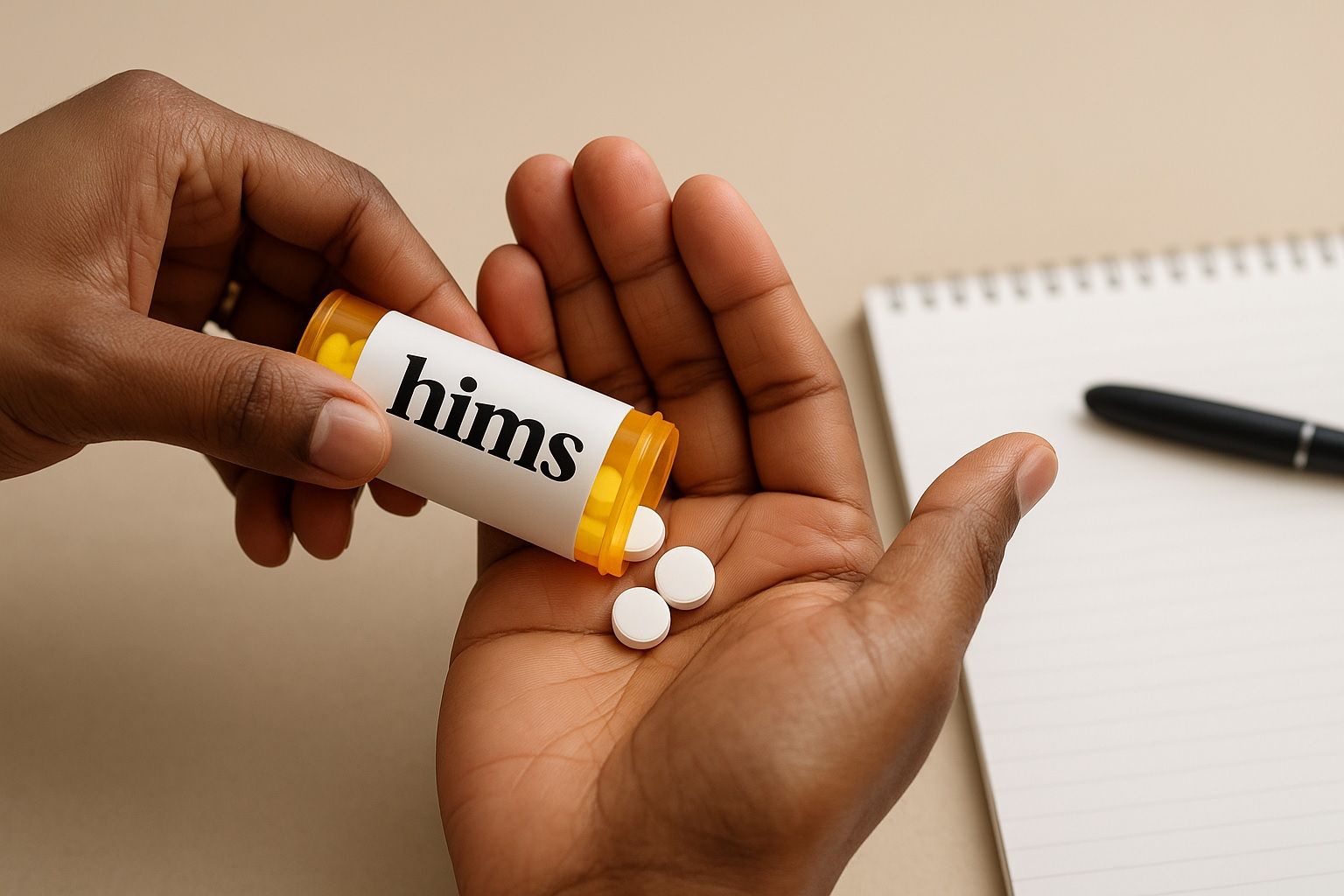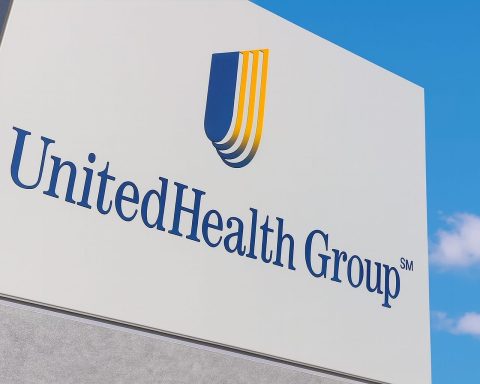- New Women’s Health Push: Telehealth company Hims & Hers Health this week launched a dedicated menopause and perimenopause care program on its “Hers” platform, aiming to serve the ~1.3 million U.S. women who enter menopause each year [1]. The Oct. 15 announcement sparked a one-day stock surge of 12–16% on massive trading volume [2], as investors viewed the move as a catalyst for long-term growth.
- $1 Billion Revenue Goal: Hims & Hers says the new menopause specialty will help its women’s health segment (Hers) surpass $1 billion in annual revenue by 2026, up from half a million current subscribers [3] [4]. The company noted a huge care gap – women spend on average 9 years in poor health around menopause, yet only ~30% of OB/GYN residencies include menopause training [5] [6]. The Hers platform will now offer personalized hormone therapy (pills, patches, creams) for symptoms like hot flashes and sleep issues, overseen by licensed providers [7] [8].
- Next Big Market? The menopause venture comes amid comparisons to the GLP-1 weight-loss drug craze (e.g. Ozempic/Wegovy) that has dominated healthcare stocks. “Weight-loss drugs shook up the stock market. Menopause treatments could be next,” one report noted, citing a “huge and potentially highly lucrative” untapped market [9]. Industry estimates value the global menopause therapy market at ~$18 billion in 2024, with potential to reach $25 billion by 2030 [10]. If all women with significant symptoms were treated, the U.S. market could approach $40 billion by 2030, and the global opportunity might be a staggering $600 billion [11].
- Stock Jumps then Pulls Back: HIMS stock (NYSE: HIMS) has more than doubled in 2025 (up ~110–120% year-to-date) [12], far outpacing the S&P 500. Shares spiked to around $60 after the menopause program launch [13]. However, the rally was short-lived: by Thursday Oct. 16, HIMS fell 5.8% to $59.15, underperforming a modest market dip [14]. Traders attributed the pullback to profit-taking after the news and broader market weakness [15] [16]. As of Friday midday Oct. 17, the stock hovered near $52–53 (down roughly 11% for the day) [17], indicating volatility as investors digest the news.
- Analysts Split on Outlook: Despite rapid growth (Q2 revenue +73% YoY) [18], Wall Street is cautious. HIMS trades at over 100× forward earnings – a rich valuation compared to peers [19]. Zacks Investment Research assigns it a “Sell” rating (Rank #4) and notes the stock’s premium valuation and high short interest have capped gains [20] [21]. The average 12-month price target is only ~$39 [22] (implying a potential drop), and only a couple of analysts rate HIMS a buy. However, bulls argue that Hims & Hers is building a dominant brand in telehealth niches. Some point to its explosive women’s segment growth and momentum from weight-loss treatments as signs the company can eventually justify its valuation [23] [24]. Upcoming Q3 earnings on Nov. 3 will be closely watched for early indicators of traction in the new menopause offering [25].
Menopause Launch Sparks Surge in HIMS Stock
Hims & Hers’ expansion into menopause care was greeted with enthusiasm in the market. On October 15, the San Francisco–based telehealth provider announced it is now offering affordable treatment plans for women in perimenopause and menopause via its Hers platform [26] [27]. The move adds a new specialty to Hers, which already serves over 500,000 women subscribers [28]. By connecting patients with providers trained in menopause care, Hims & Hers aims to fill a long-neglected gap in women’s health. “Women have been navigating an outdated healthcare system that wasn’t designed for them for too long. Hers was built to serve every woman on her terms,” said Dr. Jessica Shepherd, Chief Medical Officer of Hims & Hers [29] [30]. She noted that the goal is “building a platform that women can trust to access the care they need,” by increasing access to specialists for every life stage [31].
Investors immediately seized on the news. HIMS stock soared as much as 16% intraday on Oct. 15, its biggest one-day jump in months [32]. It closed around $60 per share, up ~12-13% for the day [33]. Trading volume was enormous – roughly 29 million shares, about 15× the daily average [34]. Such a surge signals “eager investor demand” for Hims & Hers’ growth story [35]. The company has hinted at more expansions; CEO Andrew Dudum earlier this year teased that 2025 would be an “exciting period of growth” with new “high-impact specialties” in the pipeline [36]. The menopause program delivers on that promise, coming on the heels of other new offerings (Hims & Hers rolled out GLP-1 weight-loss plans in late 2024 and low-testosterone treatments for men in September 2025) [37]. Each new service opens a fresh revenue stream, broadening Hims & Hers beyond its origins in hair loss and sexual health products.
Tapping a Massive, Underserved Market
The strong reaction to Hims & Hers’ menopause launch reflects the scale of the opportunity. An estimated 1.3 million women in the U.S. enter menopause each year [38], yet menopause care has been largely overlooked in traditional healthcare. Only about 30% of OB/GYN residency programs provide formal training in menopause medicine [39]. As a result, millions of women going through menopausal symptoms – from hot flashes and night sweats to mood changes and sleep disturbances – often struggle to find knowledgeable care [40] [41]. “It’s a huge unmet need,” explains Dr. Shepherd, emphasizing that many women spend years in poor health when better treatment could improve their quality of life [42].
That unmet need also represents a huge market. Hims & Hers cites data that women on average spend $2,000 per year on menopause-related care and wellness [43]. The global menopause therapy market is valued around $18 billion in 2024 and projected to grow to $24–25 billion by 2030 as populations age [44]. But the potential could be far larger: if all women with moderate-to-severe symptoms received treatment, analysts say the U.S. menopause care market could swell to nearly $40 billion by 2030, with a global opportunity up to $600 billion [45]. In other words, effectively addressing this “taboo” or overlooked life stage for women could unlock hundreds of billions in healthcare spending that today goes unserved. It’s no wonder Hims & Hers sees menopause as a “sizable new revenue opportunity” [46] – and why investors are drawing parallels to the frenzy around obesity drugs.
Hims & Hers is positioning itself to capture this growth by leveraging its direct-to-consumer telehealth model. Through the Hers app, patients can consult with licensed providers and, if appropriate, receive prescriptions for hormone replacement therapies like estradiol (to alleviate hot flashes, night sweats, etc.) and progesterone (to protect the uterine lining and improve sleep) [47]. Medications are delivered to the patient’s door. By removing traditional barriers – long waits, lack of specialist access, stigma around menopause – Hims & Hers hopes to become the go-to platform for women navigating mid-life health changes. “As one of the largest digital health platforms, we can help change the way women experience healthcare and thrive,” Dr. Shepherd said of the menopause launch [48] [49]. The company expects the new specialty to significantly boost the Hers unit’s revenue, helping it “surpass $1B in annual revenue in 2026,” up from ~$300 million in 2024 [50]. For context, Hims & Hers’ total revenue this year is on track for about $2.3–2.4 billion [51], so the women’s segment could soon comprise a large share of the business.
Beyond Ozempic: Is Menopause Care the Next Big Trend?
The excitement around menopause treatments comes as healthcare investors seek “the next Ozempic” – a new blockbuster theme after the weight-loss drug mania. Over the past two years, the stunning success of GLP-1 agonists for obesity (like Novo Nordisk’s Wegovy and Eli Lilly’s Mounjaro) has sent ripples through the stock market. Companies involved in obesity treatment saw their shares skyrocket, while industries like junk food and diabetes devices stumbled on expectations of slimmer, healthier populations. Now, menopause care is emerging as a candidate for the next wave of innovation and investment. “Hims & Hers is taking aim at menopause and perimenopause in an attempt to tap into a huge and potentially highly lucrative market,” MarketWatch wrote, directly comparing the situation to the earlier weight-loss drug shake-up [52].
The parallel isn’t perfect – menopause is a life stage rather than a single drug indication – but the opportunity is clear. Like obesity, menopause impacts millions (in fact, virtually all women will experience it), and historically it has been under-treated due to social stigma and medical inertia. Now several companies are racing to offer solutions. Besides Hims & Hers, even WeightWatchers (WW International) is pivoting to menopause. This summer WeightWatchers hired a chief medical officer and announced plans for a new program to help women “manage the transition into menopause and beyond” [53] [54]. The program will offer hormone therapies along with nutritional and lifestyle support, targeting the company’s core demographic of women ages 40–60 [55]. “It is a very natural overlap. In the perimenopausal and menopausal phase, up to 70% of women experience weight gain,” says Dr. Kim Boyd, WW’s chief medical officer, explaining why a weight-loss brand is expanding into menopause care [56] [57]. In effect, the lines between “diet industry” and “women’s health” are blurring as companies recognize mid-life women’s health needs as a ripe market.
Pharmaceutical players are also jumping in. Drugmakers are developing non-hormonal treatments for menopause symptoms – for example, the FDA last year approved Veozah, the first drug in a new class to treat hot flashes. Analysts point out that a safe, effective menopause drug could be a blockbuster akin to a weight-loss drug, given the vast population of potential users. While Hims & Hers isn’t developing new drugs (it’s prescribing established hormones and supplements), it stands to benefit from any increased awareness and demand for menopause solutions. Its telehealth platform can be a distribution channel for novel therapies that emerge, similar to how Hims partnered with Novo Nordisk to distribute Wegovy injections online [58]. (Earlier this year, Novo Nordisk chose Hims & Hers as one of the partners to expand access to Wegovy, underscoring Hims’ growing clout in direct-to-consumer medicine [59].) In short, Hims & Hers has put itself at the crossroads of multiple hot trends – telemedicine, women’s health, and the post-Ozempic rush to find the next big healthcare market.
Rally Meets Reality: Valuation and Volatility Concerns
After the initial euphoria, some sober second-thought has set in regarding Hims & Hers. The company’s fundamentals are undeniably strong – revenue doubled year-over-year in the last quarter, and it turned a modest profit after years of losses [60] [61]. Its subscriber base swelled to about 2.4 million as of mid-2025 [62], with the majority of new customers opting for subscriptions to treatments tailored to their needs. Growth has been propelled not only by new women’s products but also by the booming demand for GLP-1 weight-loss plans. However, the stock’s valuation has become a sticking point. Even after the recent pullback, HIMS trades around 100–105 times forward earnings – “trading at a premium” to its industry’s average ~41× P/E [63]. Its price-to-sales and price-to-book ratios are similarly lofty, reflecting a market cap above $12 billion for a company expecting ~$2.35 billion in revenue this year [64] [65]. Bulls argue that such multiples are justified by Hims & Hers’ rapid growth curve (consensus estimates see >50% revenue growth this quarter and over 59% for the full year) [66]. But many analysts remain skeptical that growth will stay that blistering for long.
Wall Street’s current stance on HIMS is lukewarm at best. Most analysts rate the stock Hold or Sell, yielding a consensus rating in the “reduce/underperform” range [67]. According to MarketBeat data, the average 12-month price target is ~$39 – 30–40% below the recent trading price [68]. For example, Bank of America’s Allen Lutz reiterated an Underperform (Sell) rating after the menopause launch, sticking with a $28 target on HIMS shares [69]. Lutz acknowledged the enthusiasm around new women’s offerings but argued that the stock had run far ahead of fundamentals [70]. Hims & Hers also has an unusually large short interest (around 30% of its float shares are sold short by investors betting on a drop) [71]. This means there are skeptics who believe HIMS is overhyped – and their presence can itself fuel volatility (any bad news can trigger rapid sell-offs, while surprise good news can spark a short squeeze rally).
Indeed, volatility is on full display. After Wednesday’s menopause-fueled spike, Thursday saw HIMS stock give back almost 6% [72] even as the overall market only dipped about 0.5%. Zacks Equity Research noted HIMS “lagged the S&P 500’s daily loss” that day [73], attributing the slide to a mix of profit-taking (investors locking in gains from the previous jump) and some nervousness around Hims’ high valuation and regulatory headwinds [74]. By Friday Oct. 17, the sell-off appeared to deepen – HIMS traded around $52 by midday, down ~11% on the day [75]. (Notably, the broader market was also red on Friday amid rising bond yields, which can hurt high-growth stocks.) The round trip from $53 (pre-announcement) to $60+ and back to low-$50s in the span of three days shows how news-driven and sentiment-sensitive Hims & Hers shares are right now.
The Road Ahead: Can Hims & Hers Deliver on the Hype?
The coming months will test whether Hims & Hers’ menopause gambit truly merits the excitement. Execution is key – the company must successfully integrate the new menopause services, attract users, and convert that into revenue growth. One early milestone will be the uptake of the menopause program: how many of the Hers platform’s 500k existing subscribers add menopause treatments, and how many new customers sign up because of this offering. The financial impact will take time to materialize, but investors will be looking for clues in upcoming earnings reports. Hims & Hers will report Q3 2025 results on November 3, and while it’s too soon for significant menopause-related revenue, executives will likely provide color on initial demand and user feedback. Any commentary on early sign-ups or subscription growth in the menopause segment could move the stock. Conversely, if management downplays the near-term revenue contribution (emphasizing it as a long-term play), markets might react cautiously.
Beyond Hims & Hers’ own performance, the broader trajectory of the “menopause market” will influence sentiment. If other companies report positive developments – say a pharma company launching a new menopause drug, or WeightWatchers seeing success with its menopause program – it could reinforce the idea that this is the next big health and investment theme. Increased media attention on menopause (which has already started, as evidenced by multiple headlines and even celebrities speaking up about it) may also drive more women to seek solutions, benefiting providers like Hims & Hers. On the other hand, regulatory scrutiny is a wild card. Hims & Hers learned this recently with its weight-loss business: in September the FDA warned telehealth firms (including Hims) about selling compounded versions of Wegovy, and the FTC is investigating Hims’ advertising practices [76]. While there’s no specific red flag in the menopause offering, Hims & Hers will need to ensure its marketing is responsible and its medical protocols are solid to avoid any regulatory hiccups in this new domain.
Bottom Line: Hims & Hers has made a bold bet that menopause care can be a major growth frontier – not just for the company, but as a wider healthcare trend. The initial market reaction was exuberant, likening menopause to the “next GLP-1” opportunity [77]. It’s easy to see why: a massive underserved population, high willingness-to-pay for symptom relief, and very few incumbents addressing the need. However, turning that potential into profit is the real challenge ahead. Investors will be watching closely to see if Hims & Hers can maintain its breakneck growth, justify its rich valuation, and truly become a leader in women’s health. As one observer put it, the menopause launch provided a “bullish spike” – now the company must show follow-through in the form of real revenue and earnings impact [78]. If Hims & Hers succeeds, it could not only reward shareholders but also validate menopause care as the next big healthcare boom. If it stumbles, however, the stock’s wild ride may continue in the form of swings or pullbacks as the hype meets reality. In the meantime, with HIMS shares on a roller coaster and analysts divided, expect the debate over this stock (and the menopause market) to rage on. As Hims & Hers’ CMO Dr. Shepherd reminds, “transforming the healthcare experience for women” is a mission whose time has come [79] – and now it’s up to companies and investors to make the most of this long-neglected opportunity.
Sources: Hims & Hers press release and data [80] [81]; MarketWatch/WSJ reporting [82] [83]; Reuters (WeightWatchers menopause plans) [84]; TS²/TechStock² analysis [85] [86]; Zacks/MarketBeat insights [87] [88]; expert commentary from Hims & Hers executives [89].
References
1. ts2.tech, 2. ts2.tech, 3. ts2.tech, 4. www.businesswire.com, 5. www.businesswire.com, 6. www.businesswire.com, 7. www.businesswire.com, 8. www.businesswire.com, 9. longvolreport.com, 10. www.edgen.tech, 11. www.edgen.tech, 12. ts2.tech, 13. ts2.tech, 14. finviz.com, 15. www.marketbeat.com, 16. www.marketbeat.com, 17. www.marketbeat.com, 18. ts2.tech, 19. finviz.com, 20. ts2.tech, 21. finviz.com, 22. ts2.tech, 23. ts2.tech, 24. ts2.tech, 25. ts2.tech, 26. www.businesswire.com, 27. www.businesswire.com, 28. www.businesswire.com, 29. www.businesswire.com, 30. www.businesswire.com, 31. www.businesswire.com, 32. ts2.tech, 33. ts2.tech, 34. ts2.tech, 35. ts2.tech, 36. ts2.tech, 37. ts2.tech, 38. ts2.tech, 39. ts2.tech, 40. www.businesswire.com, 41. www.businesswire.com, 42. www.businesswire.com, 43. www.edgen.tech, 44. www.edgen.tech, 45. www.edgen.tech, 46. www.marketbeat.com, 47. www.businesswire.com, 48. www.businesswire.com, 49. www.businesswire.com, 50. swingtradebot.com, 51. finviz.com, 52. longvolreport.com, 53. www.reuters.com, 54. www.reuters.com, 55. www.reuters.com, 56. www.reuters.com, 57. www.reuters.com, 58. ts2.tech, 59. ts2.tech, 60. ts2.tech, 61. ts2.tech, 62. ts2.tech, 63. finviz.com, 64. finviz.com, 65. finviz.com, 66. finviz.com, 67. ts2.tech, 68. ts2.tech, 69. ts2.tech, 70. ts2.tech, 71. ts2.tech, 72. finviz.com, 73. finviz.com, 74. www.marketbeat.com, 75. www.marketbeat.com, 76. ts2.tech, 77. longvolreport.com, 78. www.marketbeat.com, 79. www.businesswire.com, 80. www.businesswire.com, 81. ts2.tech, 82. longvolreport.com, 83. swingtradebot.com, 84. www.reuters.com, 85. ts2.tech, 86. ts2.tech, 87. finviz.com, 88. www.marketbeat.com, 89. www.businesswire.com










